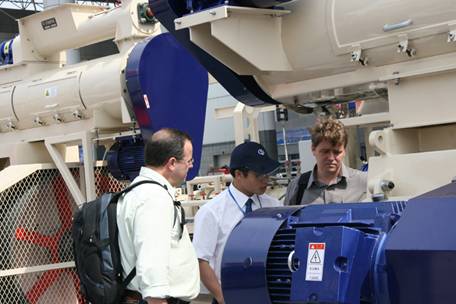The challenges to ensure a sustainable pellet trade-3
1.3 Comparison with other studies and discussion
There is a table which indicates the expected total production in 2010, 2015 and 2020 according to the estimation of the study published by Poyry in 2011, and this study expects that North America could produce a surplus of 5.4 million tons, Latin America of 4.2 million tons, Russia 1.5 million tons and Eastern Europe 2.5 million tons, adding to a total of about 13.6 million tons that could be exported-basically all to the EU and East Asia.

The “business as usual” model proposed in the present study indicates a higher possible export from the US and Canada (9.9 million tons) compared to the study by Pöyry, have about the same expectations of exports from Russia (1.3 vs. 1.5 million tons), but lower expectations about Latin America, where export potential of 3 million tons is assumed. In total, a possible export volume of about 16 million tons is assumed, about 17% higher than Pöyry.
READ: RING DIE BIOMASS PELLET MACHINE FOR SALE
Despite these minor differences, the analysis of expected supply and demand has shown that the global wood pellet market will drastically change until 2020. Total internationally traded volumes of wood pellets may increase from roughly 3 million tons in 2010 to 13-16 million tons under business as usual scenarios-or in a speculative extreme case up to 33 million tons. While the EU will remain to be the single largest area consuming wood pellets, Eastern Asia will rapidly follow as second major demand area. Global trade patterns may change, with Western Canada exporting to East Asia instead of Europe, and Latin America, Russia (and possibly Sub-Saharan Africa) may fill this gap. Major drivers for this trade will be renewable energy policies, and possibly high oil prices. On the other hand, recently voiced sustainability concerns regarding the use of whole trees for wood pellets, and the possible introduction of sustainability criteria for solid biomass in the EU may also have an dampening effect on these trade flow, but may also be required to assure that feedstocks are produced sustainably.
News
- Small Pellet Machine Manufacturer-Kingman
- Application of Wood Pellets and Use of Biomass Pellets
- From Fossil Fuel into Biomass Pellet Fuel
- Biomass Pellet Making Machines Market
- Applying of pellet stoves for home use
- Highland pellets to build $130 million facility in arkansas
- How to deal with the blocked hammer mill
- How to Make Wood Pellets with Sawdust
- The government policy promotes the development of biomass fuel
- Market analysis of biomass pellet fuel
- Strategic positioning of renewable energy
- Biomass energy has pass through the pre assessment
- The key point of deep processing of biomass pellet
- Harbin is promoting the development of biomass machinery
- The development of biomass formation technology I
- The development of biomass formation technology II
- Biomass energy industry is now going full tilt in 2015
- Rapid increasing demand of sawdust pellet on the market
- Pellet fuel market in EU
- Chinese Biomass Energy Conference held in Beijing
- Future market development of straw pellet mill
- Peanut Shell Pellet Mill Makes High Quality Pellets
- The utilization of straw is only 5%, biomass energy needs our attention!
- Corn straw pellet machine relieves the tight supply of fuel energy
- Reasons for loose or not forming of biomass pellet mill





